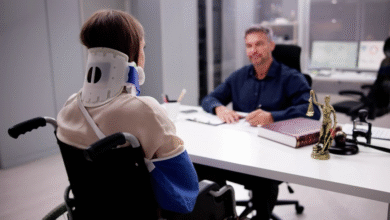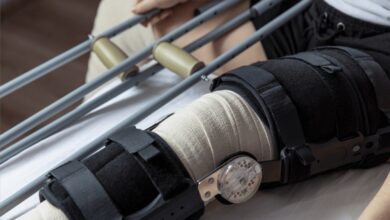Pedestrian-Friendly Infrastructure: What Is It and Why Is It Important?

The lines between space used by pedestrians and car drivers can sometimes become blurred. This can have disastrous consequences when the two collide, literally.
Someone like Sam Adams lawyer, who spends their time helping with legal claims as a result of injuries sustained in such challenging circumstances as car and pedestrian collisions, would undoubtedly understand the benefits of a pedestrian-friendly infrastructure.
Read More: Did You Lose a Loved One in a Car Accident? You May Have a Wrongful Death Case
What is it and why is it so important?
The term pedestrian-friendly infrastructure refers to urban planning and design strategies aimed at making streets and public spaces safe, accessible, and welcoming for pedestrians.
As our cities grow and evolve, prioritizing pedestrian-friendly infrastructure is seen by planners as something that is increasingly important. This approach is intended to not only enhance the quality of life for residents but also fosters sustainable and safer urban environments.
What Is Pedestrian-Friendly Infrastructure?
Let’s start by looking at what this term is describing. A pedestrian-friendly infrastructure encompasses a range of elements designed to facilitate safe and comfortable walking environments. Key components of this strategy include –
Safer sidewalks and crosswalks- Well-maintained sidewalks and clearly marked crosswalks are fundamental. They provide safe paths for walking and crossing streets, reducing the risk of accidents.
Effective traffic calming measures- These include speed bumps, raised crosswalks, and curb extensions that slow down traffic, helping to make streets safer for pedestrians.
Clearer pedestrian signals and signs- Traffic lights with pedestrian signals and clear signage guide walkers safely across streets and intersections.
Universally accessible design – Providing an infrastructure that accommodates all users, including those with disabilities. This is done by incorporating safety features like curb cuts, tactile paving, and audible signals.
Improved lighting and safety features- The provision of adequate street lighting and surveillance cameras improve safety, encouraging walking at all hours.
Read More: How Does a Motorcycle Accident Case Work from Start to Finish?
Why is a pedestrian-friendly infrastructure seen as so important?
Having this infrastructure in place encourages more pedestrian activity. This has obvious health benefits. Walking is known to offer mental health benefits, including reduced stress and improved mood.
Improved pedestrian safety is another positive aspect.Safety. A properly designed pedestrian infrastructure significantly reduces the risk of accidents involving pedestrians and vehicles. Traffic calming measures and well-marked crosswalks help protect walkers from harm.
There are also significant environmental benefits. By making walking a viable option for more people, pedestrian-friendly infrastructure reduces our reliance on cars. This leads to lower emissions and improved air quality, helping to contribute to the overall sustainability of urban areas.
Reduced traffic congestion as a result of a pedestrian-friendly infrastructure encourages more walking. This can alleviate traffic congestion by reducing the number of cars on the road, leading to less time spent in traffic for everyone. All of this offers the prospect of a more efficient transportation system.
Pedestrian-friendly infrastructures are being seen as a vital component of sustainable urban planning. By prioritizing the needs of pedestrians, cities can enhance safety, health, and quality of life for their residents.
In addition to making urban spaces safer, they also encourage a better relationship between drivers and pedestrians. Anything that can help reduce the prospect of accidents and injury in our cities has to be seen as a positive step forward.











